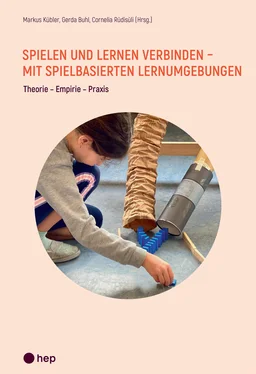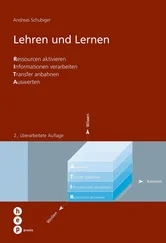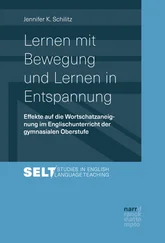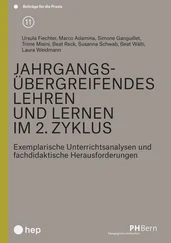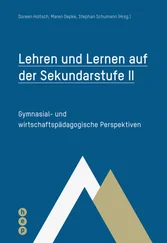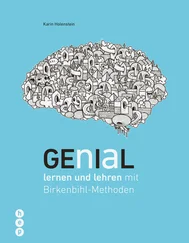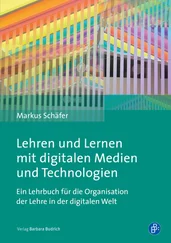1 ...7 8 9 11 12 13 ...17 Alfieri, L., Brooks, P.J., Aldrich, N.J., Tenenbaum, H.R. (2011). Does Discovery-Based Instruction Enhance Learning? In: Journal of Educational Psychology. Bd. 103, Nr. 1. S. 1–18.
Bandura, A. (1976). Lernen am Modell: Ansätze zu einer sozial-kognitiven Lerntheorie. Mit Beiträgen von 17 weiteren Autoren. Stuttgart: Klett.
Barnett, L.A. (1991). Characterizing Playfulness: Correlates with individual attributes and personality traits. In: Play & Culture, 1991, Bd. 4. S. 371–393.
Baroody, A.J., Lai, M., Mix, K.S. (2005). The development of young children’s early number and operation sense and its implication for early childhood education. In: Spodek, B., Saracho, O.N. (Hrsg.) (2005) Handbook of Research on the Education of Young Children. New York: Routledge. Kapitel 11. S. 187–222.
Bergen, D. (2018). Cognitive Development in Play-Based Learning. In: Pyle, A. (Hrsg.). Play-based learning. Encyclopedia on Early Childhood Development. Toronto. S. 22–25.
Biedinger, N., Becker, B. (2006). Der Einfluss des Vorschulbesuchs auf die Entwicklung und den langfristigen Bildungserfolg von Kindern: Ein Überblick über internationale Studien im Vorschulbereich. Mannheim: 2006. (Arbeitspapiere − Mannheimer Zentrum für Europäische Sozialforschung; 97).
Blaurock, S., Lehrl, S., Grosse, C. (2014). Das Freizeitbudget von Kindern im Kindergarten- und Grundschulalter. In: Mudiappa, M., Artelt, C. (Hrsg.). BiKS – Ergebnisse aus den Längsschnittstudien. Praxisrelevante Befunde aus dem Primar- und Sekundarschulbereich. Bamberg: Bamberg Press. S. 29–46.
Bonawitz, E., Shafto, P., Gweon, H., Goodman, N. D., Spelke, E., & Schulz, L. (2011). The double-edged sword of pedagogy: Instruction limits spontaneous exploration and discovery. Cognition, 120(3). S. 322−330.
Bradley, R., Corwyn, R., Pipes McAdoo, H., García Coll, C. (2001). The Home Environments of Children in the United States. Part I: Variations by Age, Ethnicity, and Poverty Status. In: Child Development. November/December 2001, Bd. 72, Nr. 6. S. 1844–1867.
Broadhead, P., Howard, J. and Wood, E. (2010). Play and Learning in Early Years Settings. London UK: Sage.
Bundy, A.C., Nelson, L., Metzger, M., Bingaman, K. (2001). Validity and Reliability of a Test of Playfulness. In: The Occupational Therapy Journal of Research, Fall 2001, Bd. 21, Nr. 4. S. 276–292.
Campos-de-Carvalho, M. I., & Padovani, F. H. P. (2000). Agrupamentos preferenciais e não-preferenciais e arranjos espaciais em creches. In: Estudos de Psicologia (Natal), 5(2). S. 443−470.
Colliver, Y., & Arguel, A. (2018). Following in our footsteps: how adult demonstrations of literacy and numeracy can influence children’s spontaneous play and improve learning outcomes. In: Early Child Development and Care, 188(8). S. 1093−1108.
Crowley, K. (2017). Child Development – a practical introduction. 2nd edition. London: SAGE. Kapitel: The role of play. S. 223–244.
Crowther, I. ([3]2012). Im Kindergarten kreativ und effektiv lernen – auf die Umgebung kommt es an. 3. Auflage. Berlin: Cornelsen.
Deutschschweizerische Erziehungsdirektorenkonferenz (D-EDK) (2016). Lehrplan 21, Grundlagen, 2016. Luzern. Online: www.lehrplan.ch.
Dollase, R. (2007). Bildung im Kindergarten und Früheinschulung. Ein Fall von Ignoranz und Forschungsamnesie. Gasteditoral. In: Zeitschrift für Pädagogische Psychologie, 21 (1), 2007. S. 5–10.
Downer, J. T., Booren, L. M., Lima, O. K., Luckner, A. E., & Pianta, R. C. (2010). The Individualized Classroom Assessment Scoring System (inCLASS): Preliminary reliability and validity of a system for observing preschoolers’ competence in classroom interactions. In: Early childhood research quarterly, 25(1). S. 1−16.
Downer, J., Sabol, T. J., & Hamre, B. (2010). Teacher–child interactions in the classroom: Toward a theory of within-and cross-domain links to children’s developmental outcomes. In: Early Education and Development, 21(5). S. 699−723.
Duncker. L. (2015). Spielen oder lernen? Balanceakt im Übergang vom Elementar- zum Primarbereich. In: Müller, C., Amberg, L., Dütsch, T., Hildebrandt, E., Vogt, F., Wannack, E. (Hrsg.). Perspektiven und Potentiale in der Eingangsstufe. Münster: Waxmann. S. 17–34.
Dyson, N., Jordan, N. C., Beliakoff, A., Hassinger-Das, B. (2015). A Kindergarten Number-Sense Intervention with Contrasting Practice Conditions for Low-Achieving Children. Journal for Mathematic Education. Vol. 46(3) March 2015. S. 331–370. doi: 10.5951/jresematheduc.46.3.0331.
Edelmann, D., Wannack, Evelyne & Schneider, Hansjakob (2018). Die Situation auf der Kindergarten-stufe im Kanton Zürich. Eine empirische Studie im Auftrag der Bildungsdirektion des Kantons Zürich. Pädagogische Hochschule Bern, Pädagogische Hochschule Zürich. Verfügbar unter: www.phbern.ch/kindergartenstudie.
Fisher, A. V., Godwin, K. E., & Seltman, H. (2014). Visual environment, attention allocation, and learning in young children: When too much of a good thing may be bad. In: Psychological science, 25(7). S. 1362−1370.
Fisher, K., Hirsh-Pasek, K., Golinkoff, R. (2013). Taking Shape: Supporting Preschoolers’ Acquisition of Geometric Knowledge Through Guided Play. In: Child Development. November/December 2013. Bd. 84, Nr. 6. S. 1872–1878.
Fisher, K., Hirsh-Pasek, K., Golinkoff, R., Singer, D., Berk, L. (2011). Playing Around in School: Implications for Learning and Educational Policy. In: Pellegrini, A. D. (Hrsg.). The Oxford Handbook of The Development of Play. Oxford NY: Oxford University Press. S. 341–360.
Francis, B. (2010) Gender, toys and learning. In: Oxford Review of Education. Bd. 36. Nr. 3. S. 325–344. DOI: 10.1080/03054981003732278; URL: http://dx.doi.org/10.1080/03054981003732278.
Gasteiger, H., Obersteiner, A., Reiss, K. (2015). Formal and Informal Learning Environments: Using Games to Support Early Numeracy. In: Torbeys, J., Lehtinen, E., Elen, J. (Hrsg.). Describing and Studying Domain Specific Serious Games. Cham: Springer. S. 231–250.
Gauntlett, D., Ackermann, E., Whitebread, D., Wolbers, T., Weckstrom, C. (2013). The future of play. Defining the role and value of play in the 21 stcentury. Hrsg. vom LEGO Learning Institute. Billund DK.
Glauser-Ismail, N. et al. (2018). Kompetenzförderung im Freispiel. Spielgestaltung und Spielbegleitung am Beispiel MINT. Bern: www.je-desto.ch.
Hamre, B., Hatfield, B., Pianta, R., & Jamil, F. (2014). Evidence for general and domain-specific elements of teacher–child interactions: Associations with preschool children’s development. In: Child development, 85(3). S. 1257−1274.
Hassinger-Das, B., Toub, T., Zosh, J., Michnick, J., Golinkoff, R., Hirsh-Pasek, K. (2017). More than just fun: a place for games in playful learning. Online veröffentlicht 27.3.2017. I Verfügbar unter https://doi.org/10.1080/02103702.2017.1292684.
Hassinger-Das, Ridge, K., Parker, A., Michnik Golinkoff, R., Hirsh-Pasek, K., Dickinson, D.K. (2016). Building Vocabulary Knowledge in Preschoolers Through Shared Book Reading and Gameplay. In: Mind, Brain and Education. Bd. 10, Nr. 2. S. 71–80.
Hauser, B. ([2]2016). Spielen. Frühes Lernen in Familie, Krippe und Kindergarten. 2. Auflage. Stuttgart: Kohlhammer.
Hauser, B., Vogt, F., Stebler, R., Rechsteiner, K. (2014). Förderung früher mathematischer Kompetenzen. Spielintegriert oder trainingsbasiert. In: Frühe Bildung 3 (3). Göttingen: Hogrefe. S. 139–145.
Heimlich, U. ([3]2015). Einführung in die Spielpädagogik. 3., aktualisierte und erweiterte Auflage. Bad Heilbrunn: UTB & Klinkhardt.
Hildebrandt, E., Peschel, M., & Weißhaupt, M. (2014). Lernen zwischen freiem und instruiertem Tätigsein. Bad Heilbrunn: Klinkhardt Verlag.
Hinske. S., Lampe, M., Yuill, N., Price, S., Langheinrich, M. (2009). Kingdom of the Knights: Evaluation of a Seamlessly Augmented Toy Environment for Playful Learning. IDC 2009, Juni 3–5, 2009, Como, Italy: Verfügbar unter: http://www.vs.inf.ethz.ch/publ/#2009.
Читать дальше
